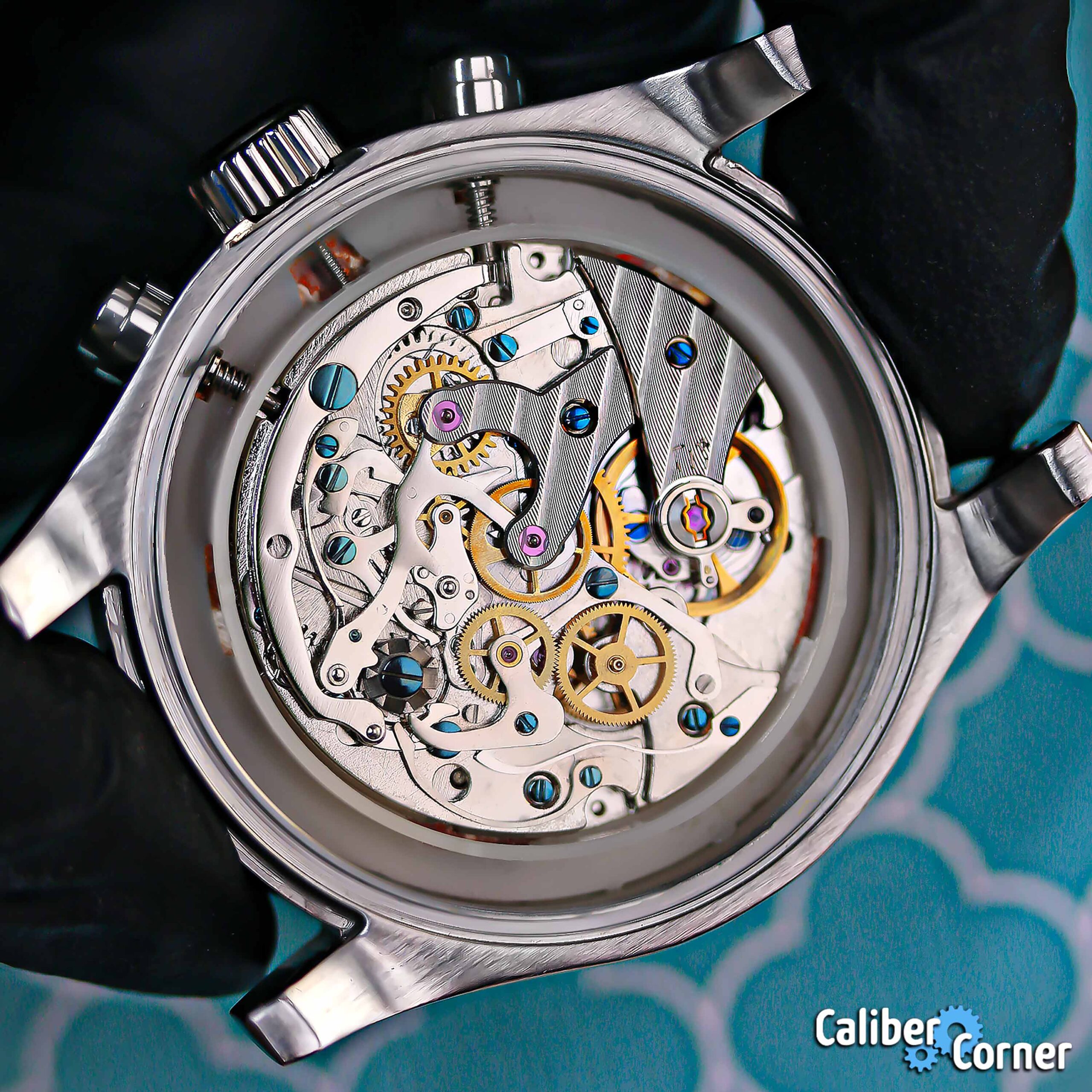There are two kinds of mechanical watches: Automatic and Manual.
The difference between the two is that one winds itself automatically and the other requires the turning of a knob (crown) to do so. Outside of a few extra parts in the automatic one, they are both just about the same.
Each watch has 5 basic elements: The energy, the wheels (gears), the escapement, the controller, and the time indicator.
Turning the knob on the side winds up the mainspring. This stores the energy. The barrel then transfers that energy to the wheels and they transfer it throughout the rest of the watch.
The escapement stops the energy from escaping all at once. The pallets hold and release the escape wheel and its teeth push against it, in turn the lever connected to the pallets pushes an impulse pin.
The swing from the balance controls the energy that is allowed to escape. The time indicator is the part that displays the time. The canon pin controls the minute hands, the hour wheel controls the hour hand and the forth wheel control the second hand.
The part that makes a watch automatic is ans oscillating weights that adds energy to the barrel spring as it swings around to the movement of the hand (wrist).
Miyota created a fantastic video that clearly explains how mechanical watches work:
Swatch also released an interesting video on this topic which is worth watching:


 network of watch sites
network of watch sites













Recent Comments
My 16 year old SARB059 (Alpinist) has a 6R15B movement. It has been sitting in…
L2.628.4 Master Collection with L 888.2 has open caseback. This was one of many reasons…
"If you have a 25 jewels ETA based GL224, please comment below if the caliber…
I'm not technical enough to give an informed opinion about Omegas co-axial implementation but I…
Seems that 0950 is the new version Maybe same situation with 9011 and 9051
Cap jewels "down" the train of wheels from the balance is always an upgrade in…
What does AC mean on the battery cover? Thank you